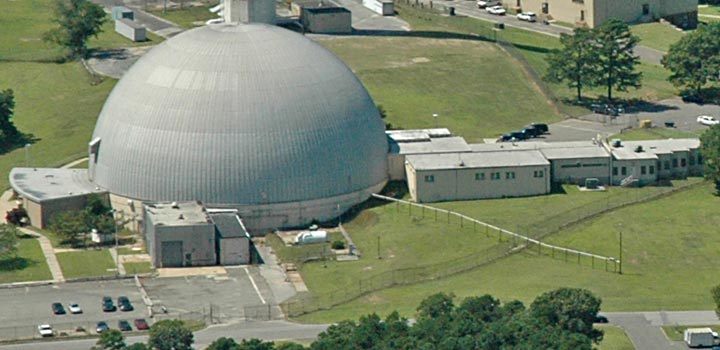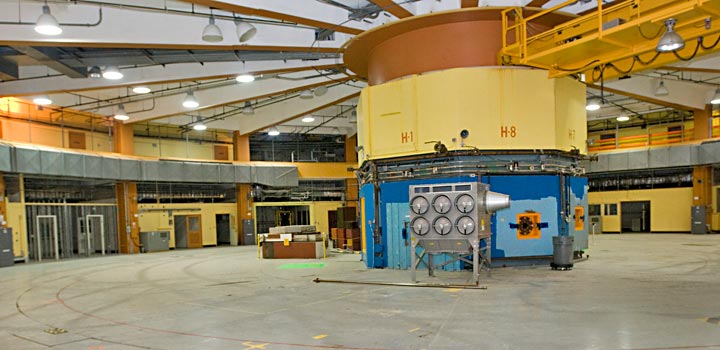High Flux Beam Reactor
Under the U.S. Department of Energy (DOE), the High Flux Beam Reactor (HFBR) at Brookhaven National Laboratory (BNL) underwent stabilization and partial decommissioning to prepare the HFBR confinement for long-term safe storage during radioactive decay. Final decommissioning of the HFBR confinement will be performed at the completion of the decay period (not to exceed 65 years).
One of 10 national laboratories overseen and primarily funded by the Office of Science of the DOE, BNL is located in the Town of Brookhaven in Suffolk County on Long Island, approximately 60 miles east of New York City. The BNL site occupies about 5,300 mostly-wooded acres in Suffolk County. Many of the Lab’s facilities are near the center of the site, in a developed portion that covers about 1,700 acres.

Aerial view of the HFBR
The HFBR was a small research reactor that operated at BNL from 1965 through 1996 and was permanently shut down by the DOE in 1999. The mission of the HFBR was to provide a source of neutrons for multidisciplinary scientific research in materials science, chemistry, biology, and physics. The HFBR achieved criticality on October 31, 1965. The reactor was originally designed for operation at a power level of 40 megawatts (MW). In addition to its external beams of neutrons, seven sample irradiation thimbles for neutron activation experiments were provided. In 1982, an equipment upgrade allowed for operations at 60 MW.
The reactor was shut down in 1989 to analyze the safety impact of a hypothetical loss-of-coolant accident. It was restarted in 1991 at 30 MW. The HFBR was shut down for routine maintenance and refueling in 1996 when tritium was detected in groundwater south of the facility. Upon further investigation a leak was discovered in the spent fuel pool that released tritium-contaminated water into the ground. The reactor remained shut down for three years for safety and environmental reviews. In January 1998, all the spent fuel was removed and shipped off site to allow for the insertion of a stainless steel liner in the spent fuel pool for the restart of the reactor. However in 1999, the DOE decided to permanently shut down the HFBR.

Photo of the interior of the HFBR, taken in July 2010, just before
the facility was put into the safe storage configuration.
Over the next 13 years the HFBR complex underwent stabilization and partial decommissioning. Stabilization of the HFBR confinement has been completed and the facility is currently in a safe storage configuration to permit the decay of the remaining radionuclides, which is limited to surface contamination and activation products. The majority of the radiological inventory is located within the biological shield. The facility is inspected on a routine basis.
Long Term Surveillance and Maintenance
Long term surveillance and maintenance activities associated with the HFBR complex (reactor, stack, and surrounding grounds) are the responsibility of the Groundwater Protection Group (GPG). They are also responsible for the long term operations and maintenance of the groundwater remediation systems, the remediated portions of the Peconic River, and the implementation of controls for the remediated areas.


